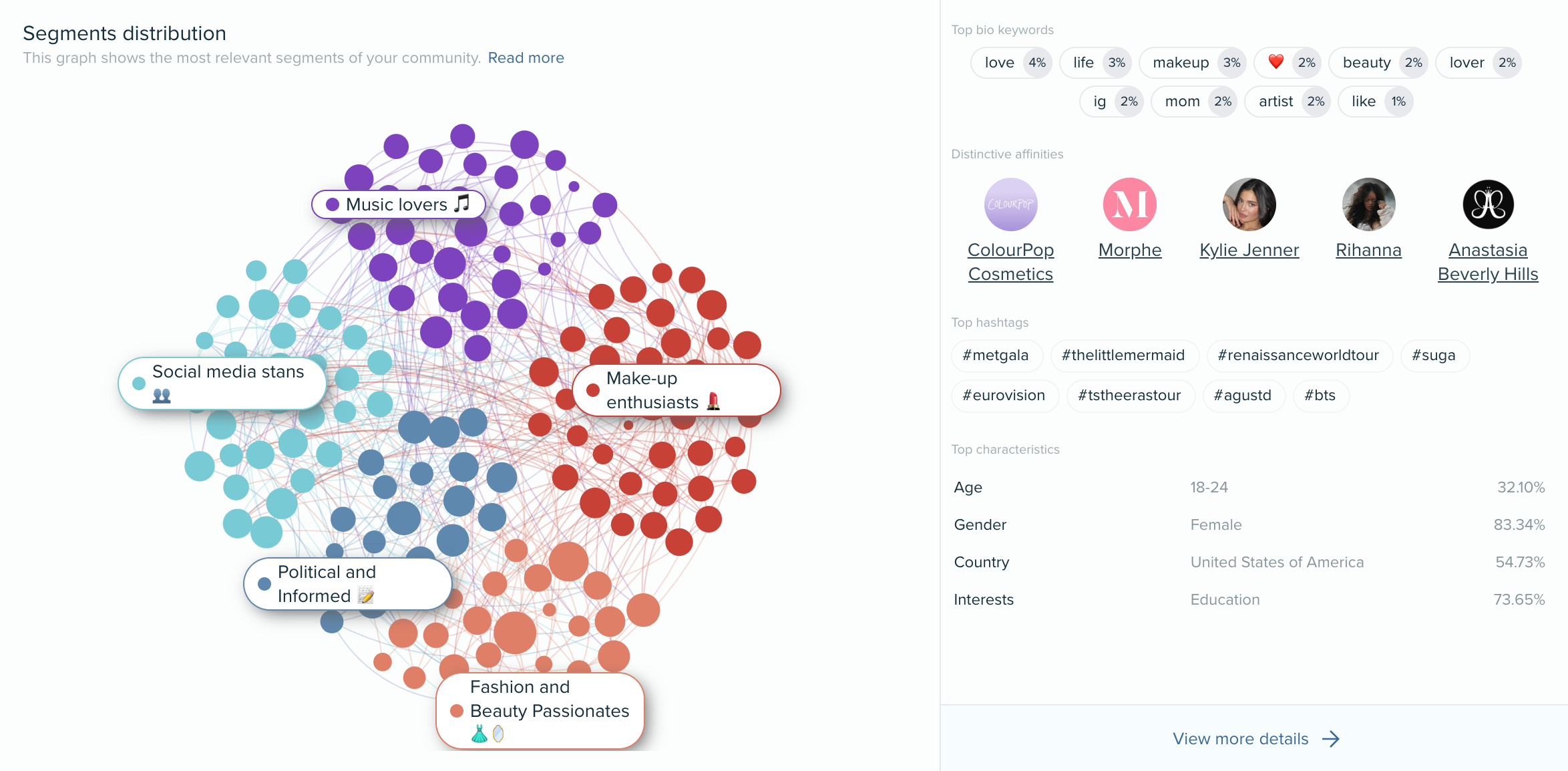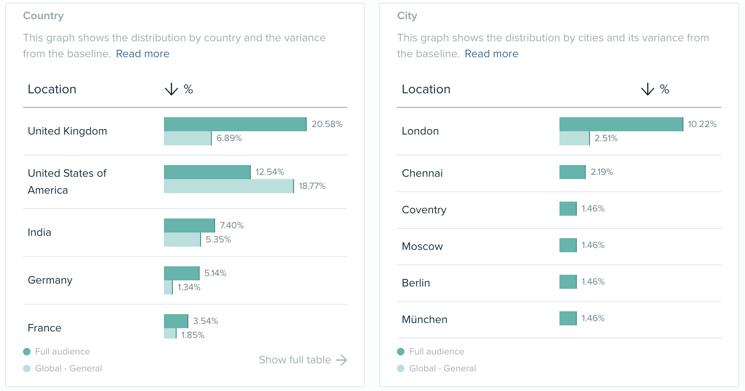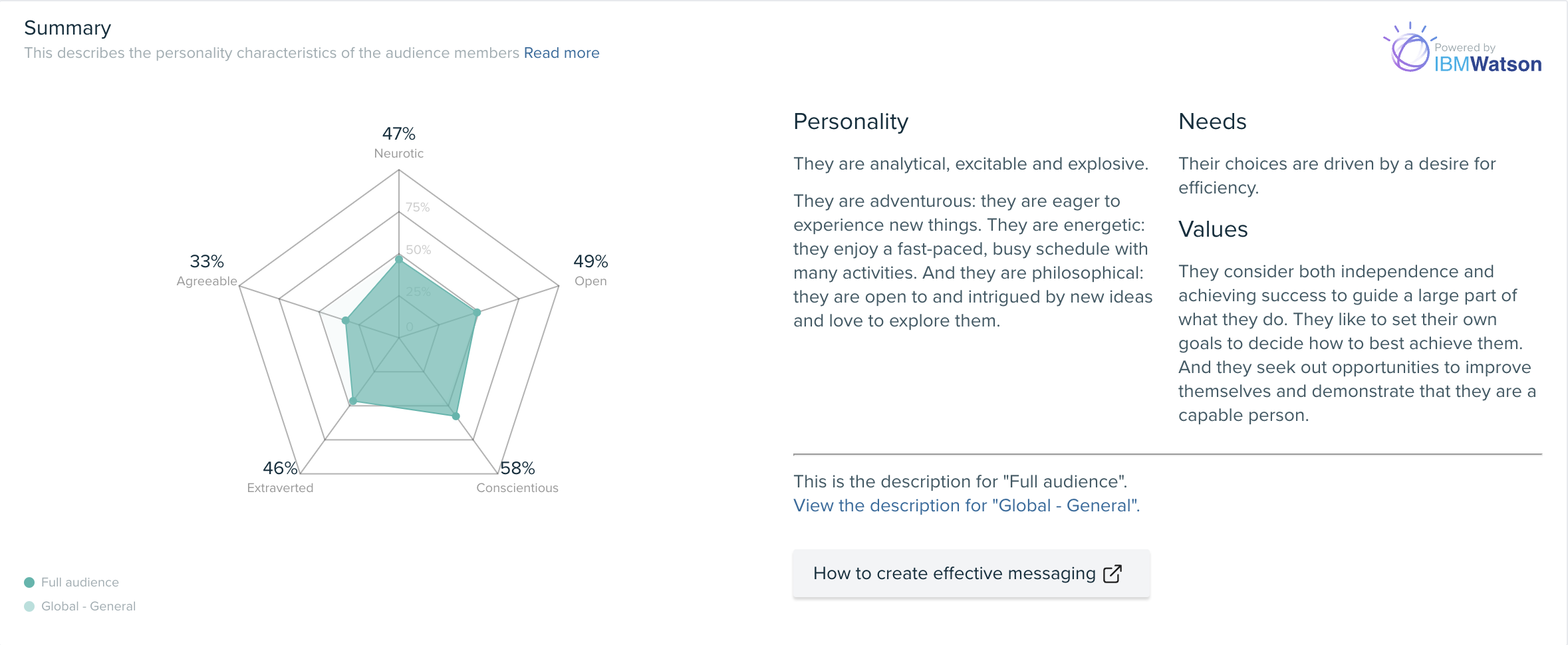How to create effective marketing segmentation and persona strategies
We’re in the era of social media and constant online presence — brands are battling for every inch of real estate in the market of consumer attention. These companies aren’t just up against direct competitors, but also every other company, prominent figure, or social media user that’s trying to engage their audience across different digital platforms.
With the number of global social media users expected to reach 4.8 billion this year, these online spaces are getting more and more crowded. This also means it's getting more and more difficult to get branded messaging in front of specific users.
This is where market segmentation and personas come into play: helping brands cut through the noise to increase the chances that marketing content reaches and resonates with their target audience.
Introduction to marketing segmentation strategies and personas
Marketing segmentation and customer personas are critical to success in the advertising world. The former involves dividing a broad target market into distinct groups, or segments, based on shared traits, behaviors, preferences, and demographic information. Brands can then use these market segmentation insights to develop the latter: specific buyer personas that incorporate findings from audience analysis to reflect the core traits and motivations of actual individuals within the target market.

Let’s take a closer look at the first component of this two-pronged marketing approach: market segmentation.
What is a market segment?
A market segment is a distinct group of potential customers within a larger target market who share similar characteristics. These traits could be demographic information such as age or income, behavioral patterns such as purchasing habits, or geographic locations.
For example, one of Red Bull’s most well-known market segments is extreme sports enthusiasts: people who are between the ages of 18 and 34 that are active participants or followers of skateboarding, snowboarding, mountain biking, and skydiving. These people have a high-energy lifestyle and drive for adrenaline that meshes perfectly with the value proposition of the company.
Importance of segmentation in marketing
Market segmentation is vital to the successful marketing of a product, service, or brand. The practice of dividing up a larger audience into segments that share similarities helps businesses better understand and cater to the needs of specific customers. Considering that over 65% of customers now expect brands to address their individual needs, the ability to accurately sort audiences into specific segments is a must.
It also improves the effectiveness of marketing strategies, increases conversion rates, and boosts overall sales and customer satisfaction.
Here are some of the main reasons why brands need to invest in market segmentation and buyer personas:
- 70% of customers report that a company’s ability to understand them impacts their loyalty.
- 80% of consumers prefer to buy from companies that provide a tailored experience.
- Contextual, relevant promotional experiences can increase the efficiency of marketing expenditures by up to 30%
- Over 75% of surveyed marketers report having used marketing personas throughout their career
Not only do companies need to embrace the use of segmentation-driven personas to keep up with the rest of the competition, but this practice actually gives modern customers what they want: personalized experiences.
Now let’s look at the main types of market segmentation you can use to improve your audience understanding.
The main types of market segmentation
At a high level, there are five principal ways a business can segment its target market into more actionable cohorts: demographic, geographic, behavioral, psychographic, and social media.
1. Demographic segmentation
Demographic segmentation involves dividing your audience using common demographic variables like age, gender, marital status, income and socioeconomic status, occupation, and education level.
For B2B brands, gathering and analyzing metrics like a company’s size, industry, target audience, employee headcount, and revenue is also important. This is what’s called firmographic segmentation.
2. Geographic segmentation
Geographic segmentation helps you categorize customers based on where they live and work. The level of specificity can range from country to state to city — even getting as granular as specific neighborhoods.

3. Behavioral segmentation
Behavioral segmentation focuses on understanding the habits and tendencies of your customer base. It includes elements like their purchase influence factors, brand interactions, spending patterns, and web usage tendencies.
4. Psychographic segmentation
Psychographic segmentation divides your consumers based on their personality traits, attitudes, values, interests, lifestyle choices, and opinions. This information is key to creating effective, personalized marketing messaging.

These four types of market segmentation —demographic, geographic, behavioral, and psychographic — have been applied to marketing strategies for a long time, but in the last decade a new, powerful segmentation category has emerged.
5. Social media segmentation
Segmenting your target audience based on the social media channels they use and their shared interests, online activities, affinities, and discussions is critical for modern brands.
Given that the global average for daily social media use is over two and a half hours, gathering data from social posts, interactions, followers, profile details, and connections is the best way to understand your different customer segments.
5 steps to an effective market segmentation strategy
Now that you know the different ways to segment a market into smaller groups, it’s time to create an effective market segmentation strategy of your own. Now let's look at the steps you need to to take to properly divide your audience.
Step 1: Identify your target market
The first step is to clearly identify your target market — remember: it's not “everyone.”
To find your target market, you need to stratify your total addressable market using the segmentation types outlined earlier: demographics, geography, behavior, psychology, and social media usage.
This will give you a number of distinct cohorts that you can compare to your current customers to find alignment.
Step 2: Analyze and understand customer needs
Next, you need to delve into these segments to identify the specific wants and needs of each group. By conducting surveys and interviews, and then utilizing data analytics tools, you gain quantitative and qualitative insights into what your customers want from your products or services.
Step 3: Determine the most relevant segments
After gathering this customer data, you need to determine which segments are the most relevant to your business. This should be based on factors such as potential profitability, the size of the segment, and how well your product or service meets their needs.
Step 4: Develop marketing strategies for each segment
Once you've identified your key segments, it's time to create buyer personas to represent them. You will use these personas to tailor marketing strategies for each segment, including everything from personalized messaging to targeted advertising to product development.
Step 5: Evaluate and adjust your segmentation strategy
Once you’ve rolled out a campaign, it's important to continuously evaluate and adjust your segmentation strategy and the personas they help build. Market conditions can change rapidly, and your strategy should be flexible enough to adapt.
Challenges in implementing segmentation strategies
We aren’t that far removed from the days when only 25% of CEO’s believed their company used market segmentation properly. Even with the availability of social listening and audience analysis technology, implementing segmentation strategies is a challenging process.
- Insufficient market research: Relying on an incomplete understanding of your target market's needs, behaviors, and preferences can cause you to target the wrong audience, create ineffective marketing messages, and ultimately waste your budget.
- Over-segmentation: Going too granular during the segmentation process can dilute your brand's message and exhaust resources by catering to too many pieces of your audience.
- Rapid market changes: Rapid changes in the market may render your existing segmentation strategy obsolete, as customer preferences and behaviors may shift quickly. It’s critical that your brand consistently checks on your different segments to update personas to ensure validity.
- Limitations in data collection and analysis: Inaccurate data leads to a flawed understanding of market segments and ineffective personas. If your company lacks the capability to analyze collected data properly, you’ll miss key insights into customer behavior and preferences, and reduce the efficacy of your marketing material.
Now that you know what to be on the lookout for during the segmentation process, let’s look at the second part of this two-pronged approach: persona marketing.
What is persona marketing?
Persona marketing is a strategy where you create a fictional character, or "persona," to represent a specific segment of your target audience. This persona is crafted based on data gathered during the segmentation stage and serves as a stand-in for your ideal customer(s).
The purpose of creating these personas is to action the understanding you’ve gained from the market segmentation stage. By targeting these personas, businesses can make their marketing efforts more focused and personalized, leading to higher engagement and conversion rates.
For example, a fitness equipment company may create different personas for a fitness newbie, exercise enthusiast, and a professional athlete. Each of these personas would have different goals, needs, and buying behaviors, which would influence the way the company markets its products to them.
Examples of successful persona marketing strategies
Several companies have successfully utilized persona marketing strategies to enhance their marketing efforts.
Companies that excelled in persona marketing
1. Eharmony
A few years ago, the online dating website shifted its marketing strategy towards personalized and targeted ads based on the specific needs and wants of its users. Surprisingly, Eharmony found that one of its particular segments, men in their 40s and 50s, responded exceptionally well to targeted messaging.
Through precision in audience targeting and remarketing strategies, such as reminding users to complete sign-up processes, Eharmony improved its advertising program, yielding an average ROI of 220% and reducing wasted spend.
2. Google
Even the mightiest of tech companies use persona segmentation to improve customers experiences and its own bottom line. According to Bob Arnold, Google's digital media & strategy lead, shifting consumer video viewing trends — particularly, the move from cable TV and desktops to mobile and other integrated devices — was significantly impacting Google's marketing strategies back in the mid-2010’s.
Using tools and processes like Google Trends, Brand Lift, and rigorous A/B testing, the company analyzed the segments of its massive video-consuming audience to determine channel usage, media preferences, and appropriate messages.
The company used this data to focus on building video ads that fit the screen and content they appear on, such as 6-second ads for mobile devices and out-stream video ads for mobile apps or non-video content.
3. Aveda
In 2021, hair and body care brand Aveda was struggling to bring in new customers despite an increase in at-home beauty treatments caused by the pandemic. By analyzing customer behavior, its marketing team found that the current strategy wasn’t aligned with the online habits and overall behavior of key audience segments.
Aveda then implemented a full-funnel YouTube Ads strategy based on buyer personas and segmentation insights gathered through Google and first-party audience data. This approach helped the brand achieve a double-digit increases in both web sessions and year-over-year search impressions, ultimately increasing brand awareness and desirability.
How persona marketing and market segmentation are linked
The translation of market segment data into actionable personas is a powerful strategy. It not only increases the efficacy of each tactic, but also enables the effective deployment of resources in the marketing process. Here's how the two are linked:
Market segmentation provides the data and insights needed to create accurate personas, while the personas help to bring the data to life, making it easier for marketers to understand, relate to, and target their potential customers effectively.
For instance, instead of simply targeting a demographic segment of women aged 30-40, a company might develop a persona called "Working Mom Wendy," who is a busy professional balancing her career and raising two young children. Using this persona company can then tailor their messaging and marketing strategy to address Wendy's specific needs, challenges, and desires, thereby increasing the likelihood of engagement and conversion.
By using market segmentation and persona marketing together, businesses can enhance their understanding of their audience, and develop more effective and personalized marketing strategies.
Benefits of an effective persona-focused segmentation strategy
Implementing a persona-focused segmentation strategy has multiple benefits, including improved customer targeting, increased marketing ROI, and better customer retention.
A persona-focused segmentation strategy can provide several benefits to an organization:
- Improved customer targeting: By creating detailed personas, businesses can better understand who their customers are, what they want, and how they make decisions. This allows for more effective targeting of marketing and sales efforts towards these specific individuals.
- Increased marketing ROI: By tailoring their messaging and marketing strategies to specific personas, businesses can increase their marketing efficiency and return on investment (ROI). Rather than casting a wide net with generic messaging, a more personalized approach resonates better with each persona, improving engagement, conversion rates, and customer loyalty.
- Enhanced product development: Personas can provide valuable insights for product development teams. Understanding the specific needs, challenges, and goals of each persona can guide the design and development of products or services that better meet these needs.
- Better customer experience: When businesses understand their customers deeply, they can provide better, more personalized customer service and experiences. This not only improves customer satisfaction, but also fosters long-term customer loyalty.
- Aligned organizational efforts: When everyone in the organization understands the personas they are serving, efforts across different departments (marketing, sales, customer service, product development) can be better aligned, leading to increased effectiveness and efficiency.
- Informed business decisions: Understanding your customers at a granular level can help inform broader business strategies and decisions. The insights gained from persona-focused segmentation can reveal market trends, growth opportunities, and potential areas for investment.
By employing a persona-focused segmentation strategy, businesses can deepen their understanding of their customers, which can lead to significant improvements across a wide range of key business areas.
Key takeaways
The use of personas and marketing segmentation is becoming an integral part of marketing strategies in today's business world. Their combined effect is powerful and promises to deliver improved customer engagement, better-targeted marketing strategies, and enhanced customer retention. Looking towards the future, these approaches present new opportunities for marketers to leverage for success.
You now know everything you need to in order to take advantage of the two-pronged segmentation and persona marketing approach:
- What market segmentation and the different types you can use: demographic, geographic, behavioral, psychographic, and social media use
- The steps you need to follow during the segmentation process, from dividing up your total customer base to implementing segment-specific marketing strategies
- The common pitfalls you need to avoid during the segmentation marketing process, including insufficient data collection, over-segmentation, and rapid changes in the market
- How market segmentation and buyer personas are connect to empower your marketing strategy
To learn more about how you can use audience intelligence tools to kickstart your segmentation strategy and drive ROI for your company, check out Audiense Insights today.






